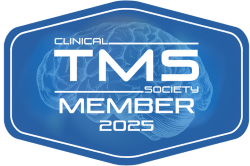
You’ve probably been thinking about this for a while—maybe even wondering if things will get better on their own. It’s tough, right? That first step toward getting help can feel like the hardest thing in the world.
You might ask yourself, “Can I handle this on my own?” or “What if it’s not that bad?” These are real, valid questions, but they can also keep you stuck. The truth is, seeking support is a huge step toward feeling better, and you’re already braver than you think for even considering it.
In this guide, we’ll break down the process so taking the next step doesn’t feel as overwhelming. Because you deserve to feel better, and you don’t have to do it alone.
How to Assess Your Symptoms
The first thing to do is to evaluate your mental health. Sometimes, what appears to be a mental health issue might be linked to other factors like stress from work, changes in your physical health, or even hormonal shifts.
- Take a moment to check in with yourself. How have you been feeling lately? Are you experiencing emotions like sadness, anxiety, anger, or emptiness? Think about whether these feelings come and go or if they seem constant. Recognizing patterns in your emotions can provide insight into your mental state.
- Notice any shifts in your daily habits. Are you sleeping more than usual or having trouble falling asleep? Are you withdrawing from social activities or losing interest in hobbies you once enjoyed? Are you turning to drugs or alcohol or finding it hard to accomplish daily tasks? Changes in appetite, energy levels, or motivation are also key indicators.
- Sometimes, mental health challenges show up physically. Are you experiencing headaches, stomach aches, fatigue, or muscle tension? Consider whether these physical symptoms occur alongside your emotional distress, as they can often be connected.
- Use mental health tests to gauge your symptoms. These tests aren’t a substitute for professional evaluation, but they can provide insight into whether you might be experiencing issues like anxiety disorders, bipolar disorder, or depression.
- Finally, listen to yourself. If you feel like something is off, trust that feeling. Your instincts are often the best guide. If your symptoms impact your daily life, it’s a strong indicator that it’s time to seek help.
Make the Appointment

Once you’ve identified something’s not quite right, the next step is finding a mental health provider. Your primary care physician is a great resource if you’re unsure where to start. They can refer you to a mental health specialist, whether a therapist or psychiatrist. You can also search for mental health services through local organizations, online directories, or your health insurance plan.
Don’t feel discouraged if it takes some time to find the right fit. It’s okay to meet with more than one therapist or doctor until you find someone who makes you feel comfortable and understood. When you find a potential therapist, ask about the types of treatment they offer. Some practitioners may incorporate cognitive behavioral therapy (CBT), dialectical behavior therapy (DBT), eye movement desensitization and reprocessing (EMDR) or other approaches. Some clinics or centers might offer more than traditional talk therapy, including innovative treatment options like TMS therapy, or SPRAVATO® (esketamine), providing a well-rounded approach to your mental health care.
What to Expect at Your First Appointment
Your first appointment can be nerve-wracking, but remember, it’s just a conversation. The therapist or doctor will ask about your symptoms, daily habits, and how long you’ve been feeling this way. They might ask about your physical health, too, as mental and physical wellness often go hand in hand. Be ready to talk about your thoughts, feelings, and behaviors—this helps the provider understand what you’re going through and develop a treatment plan tailored to you.
You may feel emotional distress during the appointment, especially if you’re opening up about things you’ve kept bottled up for a while. That’s normal. The important thing is that you’re taking that important first step toward healing.
Understanding Insurance and Payment Options
Mental health services can be quite costly, but there are often ways to make them more affordable. Check with your insurance plan to see what mental health treatments are covered. Some plans cover talk therapy or medication, while others may only cover certain types of treatment or providers.
If you’re unsure where to start, contact your insurer directly or visit their website for more details. They can help you understand which providers are in-network and what your out-of-pocket costs might be. If you don’t have insurance, there are still plenty of options available—some clinics offer sliding-scale fees, and the Department of Health and Human Services has resources for finding low-cost care.
What Happens in Early Therapy Sessions?
You’ll get a feel for the process in your first few therapy sessions. Your therapist will work with you to create a personalized treatment plan that addresses your specific needs. This plan may include regular talk therapy, exploring different coping techniques, and possibly integrating treatments like TMS or esketamine, especially if you’re dealing with treatment-resistant depression.

Early sessions often focus on building trust and making you feel comfortable. Your therapist will likely introduce strategies to help manage emotional distress and suggest small changes to improve your daily life. If medication is part of your treatment plan, you’ll also have the opportunity to discuss any side effects you might be experiencing.
Remember, therapy is a journey, not a quick fix. Each session is a step toward better understanding your emotional and mental state, setting the stage for meaningful progress in your healing.
The Importance of Support
It’s common to feel like you should handle everything on your own, but the truth is that seeking help is a sign of strength. Don’t hesitate to lean on your support network—whether that’s friends, family, or even online communities. Some people find it helpful to join a support group where others are going through similar struggles as your own. Talking about your experiences with others can make the journey feel less isolating.
You’re Not Alone
It’s easy to feel like you’re the only one going through this, but you’re not. Recent studies show that about 1 in 5 adults in the U.S. have a mental health issue. That’s a staggering 57.8 million people.More evidence also shows a steady decline in youth mental health over the past few years. This is thanks to many aspects, including COVID-19, teens and social media use, relationships, etc. But the good news is help is available, and you can regain control of your life. Relief Mental Health is here to help. Contact us today.

